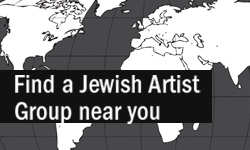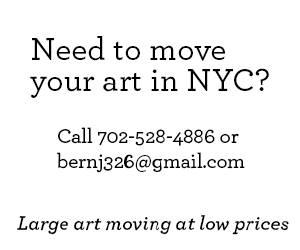A Timeless Declaration of Inspiration
14 Feb2011
By Yasmin Spiegel | Tweet
Judaism holds that way back “In the Beginning,†God created something from nothing.  The universe: the ultimate masterpiece. Therefore, to say that an artist creates a new piece of work is a misnomer because we have the entire universe at our disposal. Rather it makes more sense to say that as the artist learns or observes more about the world; the artist discovers art.
You’re probably already shaking your head and asking yourself: “Discovering, eh? But this is my artwork! My pièce de résistance!†Not so fast. We have different commandments in the Torah reminding people that we don’t create anything without a little Heavenly assistance. For example, the commandment of urla, in which a farmer in Israel is commanded to leave his fields fallow every 7th year, reminds him that though he has accomplished much, his produce will not grow on his command. Without the right amounts of rain, sun, or good nutrients in the soil to encourage his crops, the farmer won’t be able to support himself. Now lets take this full circle: We are the farmers of our own art.
We spend hours creating masterpieces that we are proud to call our own, but even when we send a nod of thanks towards the Big Guy for that rockin’ vibe of inspiration, we should ask if we really understand exactly what this “inspiration thing†is that we are so thankful for. Start with a small exercise: Examine your hands. Flex your fingers. Trace the bones of your knuckles and the lines in your palms, and realize that these are your tools even before you pick up a brush, or chisel, or type on your keyboard. Next, think about the fact that you are capable of looking at your hands. You can use your eyes to see this page or critically look at your art. Lets make this a little harder now: Look into yourself. What can you “see†in your mind’s eye?
By gauging our relationship with the world around us…we don’t just plug in, we connect.
An awareness of one’s innermost stories fosters our creations, or rather- our discoveries. In particular, we discover the way to help others better “see†the stories we want to share. Albert Einstein wrote that “Imagination is more important than knowledge: knowledge is limited; imagination encircles the world.†Each person’s internal landscape is different and as we dive deeper into ourselves, we are recording in universal context the completeness of human perception and communication.
Our ability to reach in to ourselves to reach out with art in a positive and inspiring manner becomes increasingly important as new lines of communication are being created: from simple snail-mail to “crack-berry†smart-phones to instant messaging and live-chats, the global society is becoming more plugged in but not necessarily more connected. What we wish to say is often lost in the buzz of technology to the point that the very essence of our humanity is threatened. It is the artist who understands; it is the artist is best prepared to stand at the forefront of change. Yet, in order to succeed, we need to treat our bodies well and our souls better.
By emptying oneself of worries, drama, negative thoughts, the artist becomes the canvas; the limits of knowledge begin to fade. By cultivating a lightness of the spirit we can ask ourselves: Who am I? Why am I doing this and where am I headed? How can I share this with others? How can I used my art to transform someone else’s life for the better? By gauging our relationship with the world around us, we can manifest ourselves through a diversity of mediums–so that we don’t just plug in, we connect.
Yasmin Spiegel, 23 years old, is completing studies in librarianship, information studies and archiving. Based in New York, she is currently working with category-defying, Post-Modern choreographer Yin Mei Crichell to bridge East and West in the dance world and to expand the boundaries of philosophy, dance, art and design into the 21st century. Other projects involve determining the value of real-time and digital archiving and developing the best means by which to capture and disseminate dance performance in post modern dance librarianship and education. Professional hobbies include landscape design and competitive ballroom dance.
- In: Inspiration




